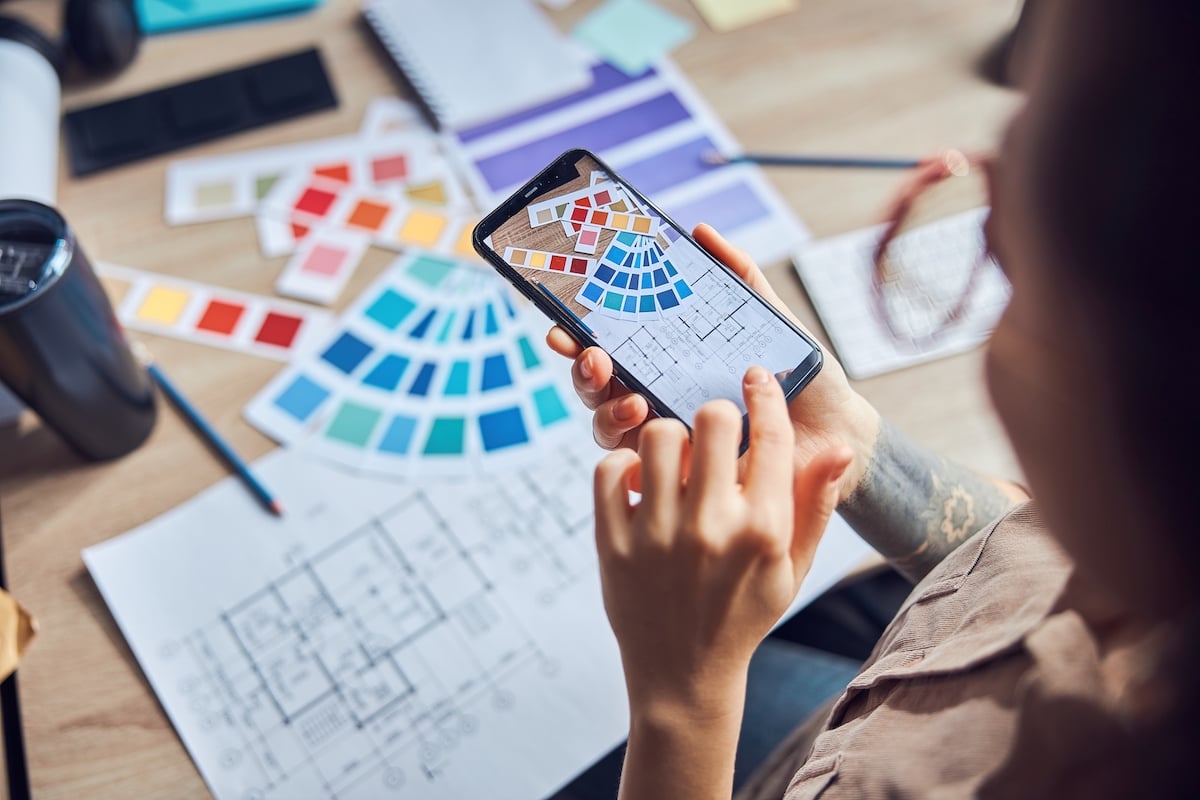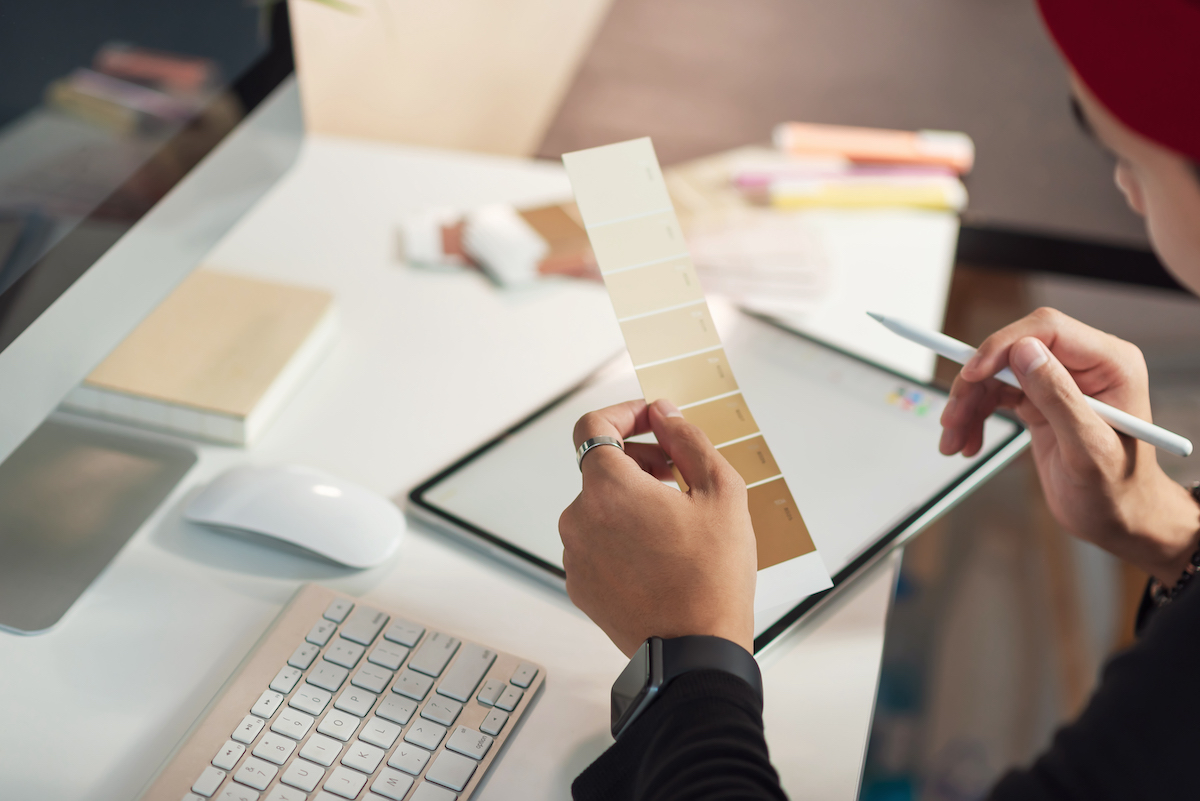
If there’s one thing we know for sure, it’s that history has a funny way of repeating itself. And while most of us haven’t experienced a global pandemic in our lifetime, we have experienced many financial downturns.
Yet from those downturns, the interiors industry gathered insights and lessons learned to collectively move forward. As a testament to this, we recall that just a few short months ago, we were celebrating the highs of one of the longest periods of economic growth in recent history and the inspired design perspectives that came along with that.
So, as a beacon of hope, we remember that this, too, shall pass. Looking forward to our industry un-paused, it behooves all of us to reflect on the knowledge and understanding gained from previous downturns as we prepare for a successful return.
Tap into technology—and recognize that expectations will shift related to it.
To some, the 9/11 attacks that left many of us working from home temporarily—specifically those in New York and Washington, D.C.—don’t seem that far in the past. Yet in technology terms, it was a lifetime ago. So, while the technological offerings today make doing our jobs remotely more convenient than it was 20 years ago, we must also acknowledge the psychological effects these shifts have on our teams.
“While we stayed home for several days after 9/11, we didn’t have the tools we needed to communicate with our team, clients, and peers (and it was only a few days),” Tom Zurowski, AIA, founding principal at Eastlake Studio, remembers. “2008 really didn’t have the suddenness that 9/11 and COVID presented to us; it kind of crept up on us as a business. I’m convinced that, while it won’t be easy, we’re in a much better position to respond and keep our practice moving forward as long as we can continue to bring in new work.”
Noting that losing face-to-face communication and check-ins may be unsettling for some managers, Zurowski adds, “It takes a certain level of trust to facilitate an effectively remote workforce, but communication is key. I don’t think we could have come anywhere near the efficiency and effectiveness that we’re achieving right now even five years ago. That’s probably what made 9/11 even scarier than it was. We had phones and we had email, but the ability to look into people’s eyes and gain a glimpse into how they’re feeling is really important to leaders of design firms.”
Take advantage of the work that makes sense now, and plan for the future accordingly.
In terms of the physical work we do both now and in the future, adaption and flexibility will be key. Understand that today’s work may not be your dream project, and tomorrow’s work may look different than the work we were doing just a few short months ago, but both can be rewarding and impactful, nevertheless.
Tom Polucci FIIDA, AIA, LEED GA, firm-wide director of interiors at HOK, explains it this way: “At each downturn, there were a number of projects for corporate clients that were about reuse of space, densify the current environment, demise space to sublease. It wasn’t glamorous work but necessary for organizations to right size their holdings.”
And in relation to future work, he explains how trends may shift as a result of our sudden work-from-home atmosphere: “A lot of individuals were out of work after the last downturn, in design as well as lots of other professions. We saw a generation of folks become self-employed, consulting with different organizations and self-determining their futures. With this trend we saw a rise in co-working environments that changed the way people paid for and occupied space. This became a huge trend as of late when corporations began to ask for the same quality of space to attract those gig workers into their own organizations. I think we are on the back side of this trend in the near future, and need to plan accordingly.”
To do this, he adds, we must focus on “creating a work environment that is not in a 1:1 ratio of employee to seat. I think an agile environment truly reflects how work is done for most but not all. My concern is that as a response to COVID-19 we’ll see a potential for organizations to shy away from managing and maintaining this type of space.”
Keep expectations realistic when we un-pause.
At ThinkLab, we’ve talked a lot about how our industry may look different when we un-pause. However, in doing this, it’s important to remember that economic curves are naturally cyclical and, when history repeats itself, we need to be prepared.
One way to do this, according to Christina Brown, NCIDQ, designer/principal at Eastlake Studio, is through flexible design that, by nature, prepares for change. “One big thing we learned during past downturns was how to successfully design for endless flexibility, which came from a need to stretch a penny into a dollar,” Brown recalls. “Don’t build all those offices in the middle of the space or you won’t be able to keep teams together as they grow or shrink. Allow for more furniture solutions that can be easily reworked and relocated when you move. Consider demountable walls. Make every space have more than one function. Those big 20-person board rooms sitting empty 90 percent of the day are a drain on resources.”
So, with a cautiously optimistic look toward the future, one corporate real estate professional reminds us: “With every national crisis, we can use it as an opportunity to re-invent.”
If you’re interested in up-to-date metrics on where the industry stands delivered right to your inbox, ThinkLab has launched a research study that can help. Among other data points, last week’s report shared that the majority of projects are continuing as planned, but slight nuances in WEEK 3 data may suggest some “on hold” projects could be cancelling, while some “continuing” are beginning to move to “on hold.” If you’d like to receive these metrics, take our survey here, and we’ll email you the results.
This article originally was published in Bellow Press and was reposted here with permissions.
Amanda Schneider is President of ThinkLab, the research division of Interior Design Media. At ThinkLab, we combine Interior Design Media’s incredible reach within the architecture and design community with proven market research techniques to uncover relevant trends and opportunities that connect back to brand and business goals in a thought-provoking, creative, and actionable way. Join in to know what’s next at thinklab.design/join-in.
